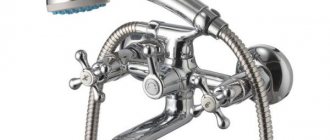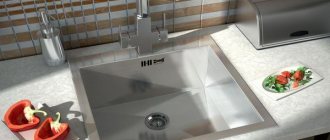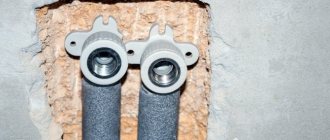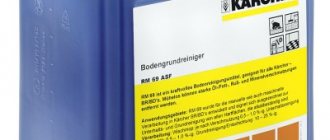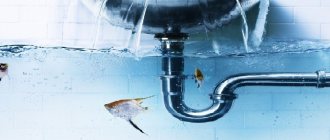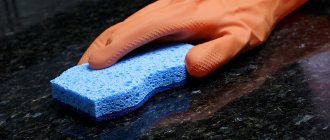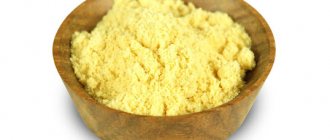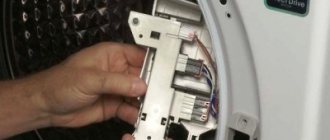Clogged sewer pipes are a problem that every homeowner faces sooner or later, no matter how carefully he uses all communications. Some may argue that it is enough not to flush large debris into the drainage system, but grease that gets into the drain abundantly when washing dishes, cleaning and cooking also causes trouble.
Let's figure out what inconvenience it causes and how to get rid of it.
How to prevent the formation of fatty blockages?
To prevent blockages in pipes, residents will have to develop new habits.
We recommend: We tell you how you can save 10,000 rubles on water in a year
The following rules must be followed regularly:
- Do not drain large amounts of oil into the sink. The remaining fat in the pan can be collected with a paper napkin and then thrown into the trash. Cans of oil should be placed in a strong bag and also thrown away.
- Wash greasy dishes only with hot water and detergent. The latter should foam well.
- Once every 1-2 weeks, pour a large amount of boiling water into the sink. It will remove food residues in the pipes that are stuck to the grease film.
- Use a plunger once a month. The pressure it creates will help break down small pockets of fat.
If a man lives in the house, he can carry out preventive cleaning of pipes every six months using a spring cable. This method will allow you to remove not only fatty deposits, but also stuck solid objects.
How does fat cause clogs?
Both animal and vegetable fats do not dissolve in water. They are destroyed by alkalis, so washing dishes using household chemicals is a good preventative against blockages.
It’s just that in hot water fats turn into an emulsion, and in cold water they solidify, forming a solid layer. And since the temperature in the sewer system is generally kept low, the deposits become thicker over time and reduce the clearance in the pipes. In addition, the remains of other food stick to the fat: cereals, pasta, ground coffee.
The main causes of fatty plugs are the following actions of residents:
- Draining oils into the sink. In particular, from a frying pan after frying cutlets, from a tin can after eating sprats.
- Draining expired dairy products into the sink: milk, kefir, sour cream, cream.
- Removing the top foam when boiling meat. It also contains fat.
- Washing greasy dishes without using detergent.
The risk of blockages increases sharply if the pipes are thin or have sharp bends. Residents of old apartment buildings often suffer from this problem.
Methods for dealing with grease blockages in pipes
The sooner residents discover a blockage, the easier it is to get rid of it. A problem is indicated by slow drainage of water, a bad smell from the sewer, or complete obstruction of the pipes. Below are effective methods to combat the problem.
Chemical method
It’s worth starting the fight against blockages with simple “grandmother’s” remedies. And if they don’t help, then move on to heavy artillery.
Before cleaning pipes using a chemical method, you must take precautions: wear rubber gloves and a mask.
Table 1. How to dissolve fat in the sewer
| Means | How to use | pros | Minuses |
| Baking soda | Pour 3-4 tbsp into the drain. spoons of powder and pour a glass of hot water. Leave for half an hour. | Cheapness | Low efficiency |
| Baking soda + vinegar | Pour 3-4 tbsp into the sink. spoons of soda, pour in half a glass of 9% vinegar and close the drain with a stopper. After 15 minutes, rinse the pipes with strong pressure of hot water. | Cheapness | Harm to the respiratory system from vinegar fumes |
| Solution "Mole" | Pour 200–250 ml of solution into the drain and leave for 1–1.5 hours. Flush the pipes with plenty of water. | Cheapness | Damages pipes if used frequently |
| "Mole" in the form of dry granules | Carefully pour 80–100 grams of granules into the drain, avoiding getting it on the sink itself. Pour 200 ml of warm (not hot) water. After half an hour, rinse the pipes, avoiding splashing the product. | Very high efficiency (4 times superior to liquid analogues), low cost | If used frequently, it damages pipes and is dangerous in direct contact with skin. |
| Gel "Ruff" | Pour 250–500 ml of gel into the drain. After 1–2 hours, rinse the pipes with plenty of water. | Safe for pipes | Uneconomical consumption |
| Liquid solution "Tiret Turbo" | Pour 200–250 ml of product into the drain. After 10–15 minutes, add another 125–150 ml of solution. After 10–15 minutes, rinse the pipes with plenty of water. | High efficiency, fast action | Unpleasant odor, not suitable for rubber and copper pipes |
| Grass Digger Gel | Pour 300–500 ml of gel into the drain. Leave for 2-3 hours. Rinse off with plenty of water. | Safe for pipes, odorless, antibacterial | Uneconomical consumption, high price |
We recommend: Is it possible to clean headphones with hydrogen peroxide - all the pros and cons
Mechanical method
The mechanical method should be used in case of severe blockages or in case of solid waste stuck in fat. The following tools are usually used:
- rope;
- ribbon;
- spring cable with rod;
- electrical device made of steel wire with an attachment.
The work should be carried out by a person who understands plumbing. Otherwise, there is a risk of pipe damage.
Thermal method
If the blockage has just begun to form, strong pressure of hot water will help get rid of it. You can first pour detergent into the pipes - it will slightly soften the deposits.
Professionals remove severe clogs using special equipment. It supplies hot water under pressure. The thermal method is considered one of the safest for pipes.
Pressure method
To combat fatty plugs, you can use an old and proven remedy - a plunger. It should be pressed tightly to the drain at a slight angle, and then with frequent and sharp movements, create increased pressure in the sewer. This method works well in situations where a blockage has formed in a pipe bend.
Prevention
To prevent massive accumulation of fatty deposits on pipes and the formation of complex blockages, it is better to regularly carry out preventive measures:
- Do not save on water with excessive fanaticism. If the required amount of liquid does not enter the pipes, their natural purification does not occur. The sewage system especially needs hot water, which breaks down fat well.
- Do not use the toilet as a trash can. It is not recommended to even throw toilet paper there, not to mention draining fat from pans, soup and broth. The best way is to collect them in a container and throw them away with the trash.
- Install screens on your kitchen sink and bathroom drain. This will prevent hair and food debris from getting into the pipes, which will not stick to the sticky layer of fat and form a plug.
- Once every six months, clean the drain system using soda, boiling water and vinegar. It's fast, safe and very effective.
- Do not trust the work of installing sewerage and water supply to dubious plumbers.
- Remember that pipes have their own service life. Its significant excess can damage the entire sewer system.
Owners of private houses are advised to constantly monitor the water level in sewer wells so that their contents do not escape through drain holes in the kitchen and bathrooms. This is especially dangerous if the system is not equipped with a check valve on the outlet pipe.
Remember that blockages always appear unexpectedly and create serious discomfort for those living in an apartment or private house. To ensure long-term and uninterrupted operation of the water supply and sewerage systems, it is necessary to provide the pipes with proper and timely care, as well as install protective equipment on the drain holes.
Is it so important to clean the sewer pipe from grease?
The reason for the appearance of a greasy film on the walls of pipes is clear. Fat ends up in the drain along with food debris. Broths are often poured into the sink, dishes are washed in it, and food is cleaned in it. Also, fatty deposits occur in the pipes that are connected to the toilet, because waste is often dumped there too. In the case of toilets, this problem is not so acute, because many toilet care products contain substances that perfectly dissolve fat.
Grease is the main cause of clogged pipes. It accumulates on the pipe walls, forming a sticky film. Small debris that passes through the sewer easily lingers on this film. As a result, a blockage will soon form.
In addition, grease in the pipe is unhygienic. It is an excellent breeding ground for bacteria . If you notice a foul odor coming from your drain, there is likely a large amount of oily deposits that have accumulated in your drain. It's time to think about how to clean sewer pipes? Many people resort to improvised means in this matter.
Handy remedies for fighting grease in pipes
Vinegar and baking soda are available in every home, so the process of cleaning pipes can begin immediately. But it is optimal to have one pack of salt and a full bottle of vinegar for effective cleaning.
The essence of the technique: you need to pour soda directly into the sewer hole. If she calmly penetrates there, you can fall asleep without fear. After this, you need to pour out the vinegar.
A violent chemical reaction will immediately begin, resulting in the release of a large amount of carbon dioxide, which will have an effect on fat accumulations in the pipes. During the chemical reaction, increased pressure is created, so not only fat is cleaned, but also various contaminants.
Remember! If we are talking about severe pollution, these products will not come to the rescue. They will help clear the pipes of grease only if there is no serious blockage. Although, as a preventive measure or for a temporary solution to the problem, this method will work great.
Preventive measures
It will not be possible to completely protect pipes from grease ingress - after all, quite a lot of it remains on the dishes, and all detergents only help remove it from there, but not dissolve it. But it is still possible to reduce its quantity. It is better to pour oil from a frying pan or the remains of other fatty foods into an unnecessary container and throw it in the trash. Or at least flush it down the toilet, the sewer pipe of which is much wider, and fill it with warm or hot water to liquefy the fat.
Proper design of the sewer system will also help minimize the likelihood of such blockages. This involves selecting the optimal diameter of the pipes and their location at an average slope (5-10 cm per meter of length). With a smaller slope, all waste washed into the sewer will stagnate; with a much greater slope, the drains will begin to stratify. Water, as the lightest substance, will rise to the top and drain quickly, grease and other contaminants will settle against the walls, quickly clogging the pipe.
Mechanical cleaning methods
The most affordable method is to use a plunger, which can be found in almost every home. The operating principle of this simple device is to create strong pressure, which helps dislodge the blockage and its further destruction. For this:
- Cover the drain hole with a plunger.
- Fill the sink with water to a level above the rubber valve of the fixture.
- Make several movements with the plunger without lifting it from the surface.
If the blockage is too deep and blocks the flow of water almost completely, use a plumbing cable with tips in the form of a volumetric spring or a metal brush. Dealing with it is not as difficult as it seems:
- Unscrew the drain and siphon.
- Insert the free end of the cable into the pipe, screwing it in a circular motion.
- When you reach the fat plug, using maximum effort, twist the cable until it passes freely through the pipe. At the same time, from time to time, supply hot water to the sink so that the pieces of cork go down the drain.
- Remove the cable from the pipe, clean it and lubricate it with machine oil.
- Rinse the pipe through the drain with plenty of water.
You can also remove grease deposits from a pipe using a hydrodynamic method using a compressor that is capable of creating a pressure of 190 MPa (these compact devices are easy to find on the open market). The method is effective for use in the most difficult to reach places. During the work, it is necessary to insert the hose nozzle into the pipe to a depth of 50-60 cm and connect the compressor. The system will work automatically, gradually moving further and further through the water supply thanks to jet thrust. The nozzle is selected depending on the severity of the blockage (universal, punching, chain-carousel).
If you can’t handle the problem yourself, call specialists who have professional equipment. Thanks to thermochemical and pneumatic-hydropulse cleaning, they will eliminate the problem in the shortest possible time.
